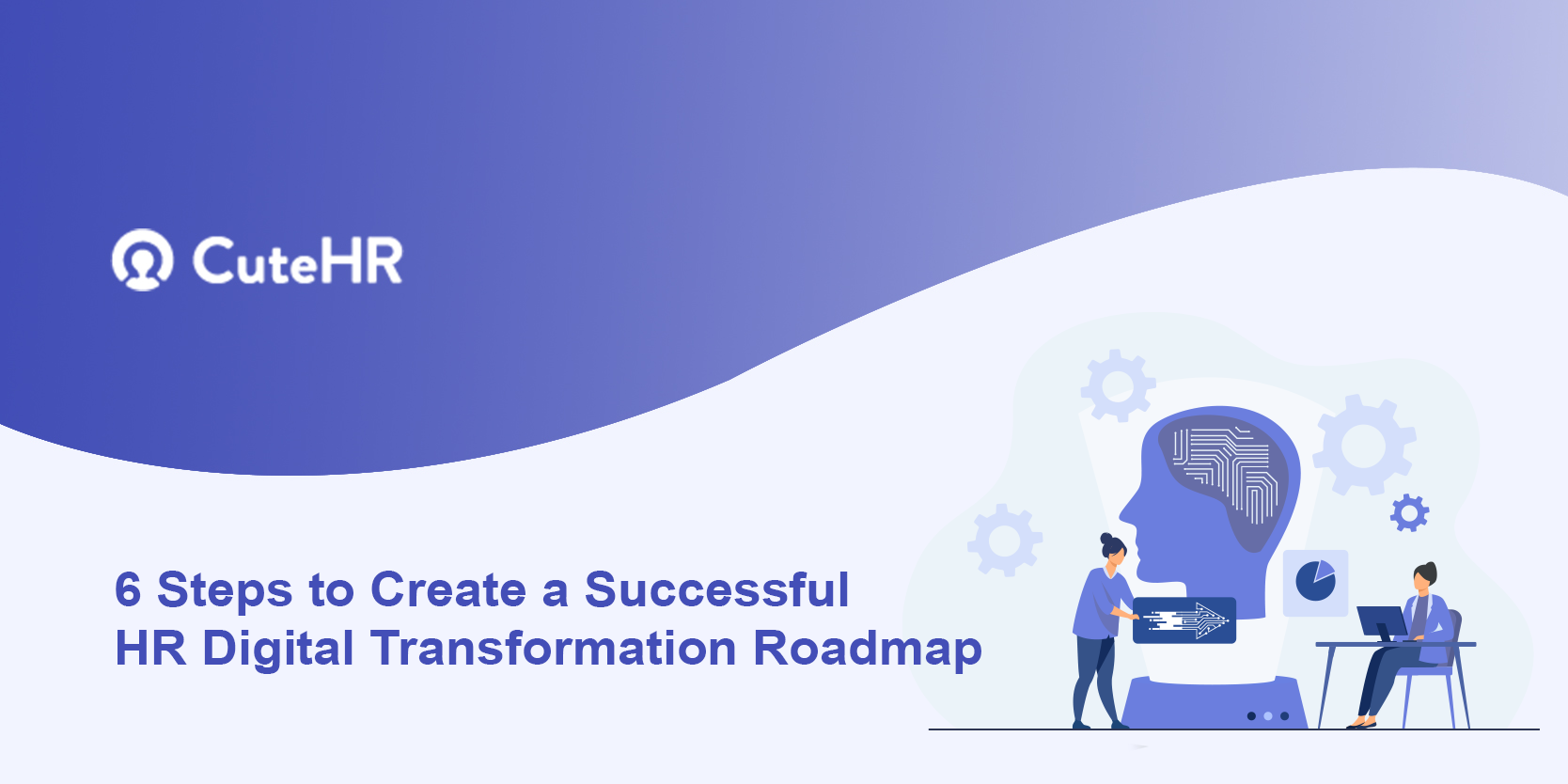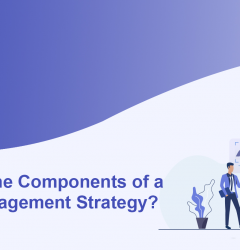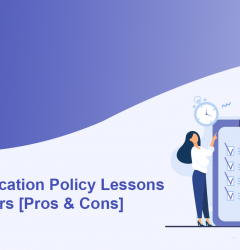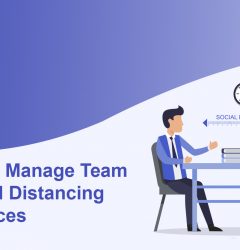03 Apr

Did you know? According to a report, worldwide investment in HR digital transformation will nearly double between 2020 and 2024.
HR Digital transformation is both a process and an end result. It is both a revolutionary and evolutionary phenomenon. In addition to digitalization, the change to business with technology at its core necessitates a shift in an organization’s culture and philosophy.
In an age where technology disruption is the ordinary, the digital transformation of HR, like every other aspect of the company, is critical. With the development of artificial intelligence (AI), blockchain, machine learning, automated performance management, and other technologies, HR departments that rely on Excel spreadsheets to gather and evaluate data should indeed transition to automated processes as soon as possible.
Table of Contents
What is Digital Transformation in HR?
In the most basic terms, HR digital transformation includes the use of digital human resource technologies, processes, and strategies to improve employee experiences and maximize operational performance through data-driven, automated activities.
The digital transformation of HR has two sides: on one side, they use technology to alter HR operations, transforming the workforce and how things are done in the workplace.
Successful HR digital transformation will not just optimize HR procedures. If done correctly, it should have a positive overall impact on the organization. When seen from this perspective, getting HR on board with a comprehensive digital transformation plan is essential.
Advantages of HR Digital Transformation
Frequently occurring and rapid technological developments have caused practically every organization to evolve in some manner, affecting all aspects of the business. This digital transformation in HR is both transactional and transformative.
Payroll, leave management, benefits management, and time management is examples of transactional processes, whereas talent management (talent acquisition, learning, and productivity) and corporate intelligence are examples of transformational processes (workforce planning and the use of big data).
As a result, modernizing HR transformation has a far greater impact than merely increasing efficiency. Indeed, the advantages are experienced by all stakeholders in the organization, including employees, managers, the C-Suite, and, of course, the Human resources department.
Here are the top advantages we notice among our clients:
1. Improved Coordination Between Company Strategy and Human Resource Management
Workforce planning and people data, for example, enable organizations effectively coordinate with the business goal. For example, if a company wishes to expand into a new range of services, data might identify people who have the necessary abilities or those who need to be upskilled, preparing the staff to meet this new challenge.
2. Employee Satisfaction has Improved
There are several studies that show that happy employees are more productive than unhappy ones. Organizations get a sense of accomplishment and purpose when they demonstrate the worth of their workforce through enhanced procedures.
3. Increased Skill Retention
One of the primary reasons for employees quitting an organization is a lack of employment possibilities. People want to grow in their careers, and when businesses show that they care about their workers’ careers, employees are more inclined to remain longer, retaining exceptional people and lowering recruiting expenses.
4. Manual Process Automation
Many administrative duties may be automated, resulting in fewer opportunities for human mistakes and improved control of crucial things such as compliance. The HR staff may then concentrate on projects that are strategic and add the most value to the company.
5. HR Systems that are Interconnected
Consolidation implies a uniform user interface and a single source of truth. Employees are more likely to engage and complete activities when there is one platform for all HR needs, rather than moving between programs or being confused about capabilities.
6. Reduced HR Expenses
Organizations that invest in digitalizing HR save a lot of time and money in the long term because procedures are simplified and enhanced. Additionally, having visibility throughout your workforce allows you to boost internal mobility while decreasing external recruitment expenditures.
7. Increased Visibility of the Workers
When a staff is separated over numerous sites, it can be difficult to maintain visibility. Technology, on the other hand, integrates data from various sources and gives you a complete overview of your employees. Managers can also benefit from this visibility in order to focus on areas such as their teams’ abilities and training requirements.
8. Improved Reporting and Advanced Analytics
Advanced analytics may demonstrate the effects of HR’s efforts and assist the team in being audit ready. Machine learning can also further automate operations, such as providing learning to employees depending on the interests of others, by forecasting future behavior using existing data.
Examples of HR Digital Transformation
Most monotonous tasks can be automated. Organizations employ digital technology to automate a wide range of human resource tasks. Employee onboarding and offboarding, verifying and monitoring timesheets, leave requests, employee training, and benefits management are examples of these. However, in this part, we will look at two specific examples of digitalization in HR transformation: Analytics for AI hiring and performance management
1. Performance Evaluation
Employee performance management has traditionally been a time-consuming and inefficient HR procedure that necessitated the manual compilation and assessment of evaluation forms.
Automation not only eliminates these time-consuming paper-based procedures, but also increases productivity and retention through goal setting, improved feedback, and expanded training opportunities.
Setting and sharing objectives with employees is a critical component of effective performance management. Employees and supervisors may simply keep track of successes in a performance management system using automation.
Tracking performance data assist HR departments in identifying process bottlenecks. Notifications and reminders might well be delivered to both employees and supervisors using automation to help them meet crucial deadlines.
An HR automation system enables managers to provide better informed and focused feedback when offering feedback. Managers might identify specific employee training requirements with additional data. This not only increases productivity but also stimulates professional development, which is a vital function for modern HR departments.
2. Analytics for AI Hiring
Human Resources departments are overloaded with recruitment chores regardless of the situation of the economy. Employers should continue pursuing and engaging suitable people in periods of low unemployment or risk losing them to a rival.
When there aren’t enough jobs, HR departments are overloaded with applications from people yearning for work. Automation, such as artificial intelligence (AI), can help to speed these procedures while also helping firms to make better educated recruiting decisions by collecting and analyzing data.
Modern recruitment and hiring methods are vastly different from those of the past. Not long ago, recruiting entailed gathering and combing through vast bundles of resumes. Employees would schedule interviews with those individuals who were competent, store a few resumes for future opportunities, and discard the rest.
Today, the information gathered by HR departments from candidates is a highly important commodity. HR departments sometimes use AI to make sense of big datasets, permitting them to target their recruitment efforts more precisely and make smarter hiring decisions.
Consider that a terrible hire might result in a considerable financial loss for a business. Recruiters should make better selections and reduce risk by examining factors such as how well an employee will fit into a job and how long he or she is likely to stay with the firm.
It’s also worth mentioning that by automating time-consuming and monotonous operations, recruiters have more time to undertake proactive hiring and spend more time with prospects to find better fits.
3. Chatbots for HR
Even the most perfectly planned digital employee onboarding process and employee self-service portal will not address every potential inquiry or concern of your employees.
HR chatbots, on the other hand, allow HR to design auto-response messages that rapidly answer some of the most frequently asked queries and concerns. Chatbots can also collect employee information sequentially as needed.
Aside from the obvious time and disruption savings, chatbots are a form of communication that today’s workers are comfortable with and a practical alternative for stopping by the HR office to ask a basic question.
4. Platforms for Digital Adoption
Adopting new software might feel like another barrier to getting work done for workers, but much of that reluctance (and even a desire to cling to old solutions) can be addressed when employees know they won’t have to figure it out on their own or face a steep learning curve. Digital adoption platforms offer an engaging approach for employees to learn on the job, with step-by-step online tutorials for the features they use the most.
They allow for the analysis of usage, the automation of operations, and the enhancement of user experience. Recognize a workflow that frequently results in drop-off? Make a new tooltip or video to assist employees in getting unstuck.
5. Analyzing People
The use of data-driven decision-making in HR procedures to boost employee productivity, engagement, and performance is known as people analysis. People analytics is used by organizations to improve personnel management, employee retention, succession planning, and even recruiting.
And while the name “analytics” may not summon up images of people and culture, they are at the heart of this HR digital change. You’ll utilize the information you gather to assist your staff in thriving and feel more fulfilled at work.
The data gathered via team-building activities and other methods of data collection and analysis may be used to develop an efficient L&D plan, allowing for upskilling and reskilling while also enhancing productivity and employee happiness.
HR Digital Transformation Roadmap
The following are the major milestones for each HR transformation roadmap:
1. Determine the Current Level of Maturity
The first stage is to assess how well the AS-IS HR processes and performance KPIs are connected with industry best practices. You must also determine if outdated corporate systems can be integrated with HR automation technologies. The current status evaluation may show process bottlenecks, such as delays in salary crediting to employees.
2. Establish A Strategic Vision
Companies need to set meaningful and quantifiable goals for the TO-BE state of their HR activities. These objectives must be determined cooperatively by all key stakeholders and top management. For example, one goal may be to cut payroll processing time by 15%. Setting targets will assist in identifying the areas that require attention as part of the digital transformation HR plan.
3. Define Business Requirements and Identify Gaps
You can list the processes and components that require hr digital transformation based on the gaps observed. These would serve as the foundation for the extent of the business needs. For example, to achieve the abovementioned aim, you must automate payroll calculations by integrating data from attendance, leave management, and accounting systems.
4. Choose Products and Vendors
You can investigate HR automation systems that offer the appropriate functionality based on your business requirements. Choosing ready-to-deploy cloud goods over constructing in-house platforms from scratch is favorable.
Cloud-based HR digital technologies provide simplicity, scalability, and security without significant initial expenses. Using third-party system implementation providers delivers the required skill sets and ensures a quicker go-live.
Most service providers give live demos so that customers can take a firsthand look at the product. The request offers from several suppliers before settling on the best one in terms of pricing, schedules, and deliveries.
5. Implement and Circulate Solutions
You should also create a phased rollout strategy, especially if your company includes many locations. Each phase’s procedures, IT systems, and employees should be listed in the roll-out strategy. Training programs, internal communication methods, and change management activities should also be included.
6. Get Creative with POCs.
Proof-of-concept demonstrations of minor functional modules enable businesses to get stakeholder approval and prepare HR department personnel for impending process improvements. It also strengthens relationships with the relationship between a company and enhances communication with IT teams.
7. Assess and Improve
Following implementation and roll-out, it is crucial to monitor the progress in key performance indicators (KPIs) in accordance with the goals established at the outset. An innovative HR department is distinguished by continuous incremental enhancements based on performance data and analytics.
Stages of HR Digital Transformation
HR transformation is not something you can turn on and off.
Instead, it is a never-ending process of replacing obsolete HR solutions with contemporary technologies and procedures.
These legacy procedures have been around for a long time. It will take some time to replace them, as well as the mindset that sustains them. However, there is a method to bring HR into the digital era. This strategy is built on the six stages of HR digital transformation.
1. Business as Usual
Also known as the ‘we usually did it this way’ stage. HR strategies, technology, and people are still using obsolete HR solutions at this level. The leadership is unconcerned about change since they see no value in it.
Before you can even examine your HR transformation strategy, you should first eliminate these hurdles — and the established prejudices of HR professionals who support them.
2. Active and Present
Welcome to the ‘let’s see how it goes’ stage of HR digital transformation.
Finally, the benefits of HR digital transformation are recognized by senior management. Likewise, fields of innovation are expanding. HR employees are collaborating to launch small-scale test efforts and effectively implement technical innovations.
3. Formalized
At this stage, the HR digital revolution is well started. A program’s scope broadens. You’re now evaluating more methodically to tackle particular business problems.
However, because you’re now spending a lot of money, there’s some criticism from the upper management. Delivering outcomes becomes crucial, especially because the next phase of the HR digital transformation will involve even more collaboration (and a larger budget).
4. Strategize
At this stage of the hr digital transformation, strategically work teams guiding the HR transformation are granted a place at the top board of management.
You are not spending your time seeking to convince people of the benefits of digital transformation in HR. That part of the tough task is finished.
The following phase is to develop a multi-year HR transformation strategy. This requires developing a strategy that connects HR to all elements of the organization.
5. Converged
At this phase in your HR transformation journey, you’re focused on developing a strong multidisciplinary approach to support the new strategy as it supports business and customer-centered goals.
At this stage, a specialized digital transformation team is formed to oversee the company’s management and operations.
6. Innovative and Adaptable
At this phase, your digital transformation team’s role is to create and test new concepts.
Implement test efforts with other departments. even if the concepts sound strange. HR digital transformation is an important company aspect. Experimentation (and even failure) helps keep the needed pace.
By the sixth stage of HR digital transformation, the organization’s – or rather, its workers’ – perspective has completely shifted.
As a result of digital transformation becoming the new “business as usual,” a new ecosystem has arisen.
It nearly appears to have grown into a strategic philosophy. This, however, extends beyond people using various internet platforms and technology. It means they recognize – and embrace – the fact that change is a constant in today’s world, and that a company’s success is dependent on its capacity to adapt to it.
Wrapping It Up
To end on a positive note, whether you like it or not, an HR digital transformation is unavoidable. In a world that is rapidly modernizing, with consumers-turned-employees who don’t know any better than for practically everything in their life to be digital, HR and employers simply cannot afford to fall behind.
Take a look at what the Schaeffler group accomplished, for example. To support numerous procedures, it opted to migrate its HR operations to a cloud-based HR system. Consider, for example, hiring, payroll, and succession planning.
As an outcome, the organization saved time retrieving operational data had quicker access to business analytics, and boosted employee engagement and satisfaction. Isn’t that a good digital HR transformation score?
Frequently Asked Questions (FAQs)
1. Why is HR digital transformation so extremely crucial?
Digital transformation benefits organizations across industries: It helps firms to upgrade outdated processes, improve workflow efficiency, reinforce security, and increase profitability. 90% of businesses conduct their operations in the cloud.
2. What are the finest digital HR Transformation practices?
Best Practices in Digital HR 2 – Create balanced transformation teams. Consumers, HR experts, and external consultants are balanced in the middle with the use of HR digital transformation, business experts, and technology to guarantee solutions are built with them in mind instead of enforced onto users.












Himani